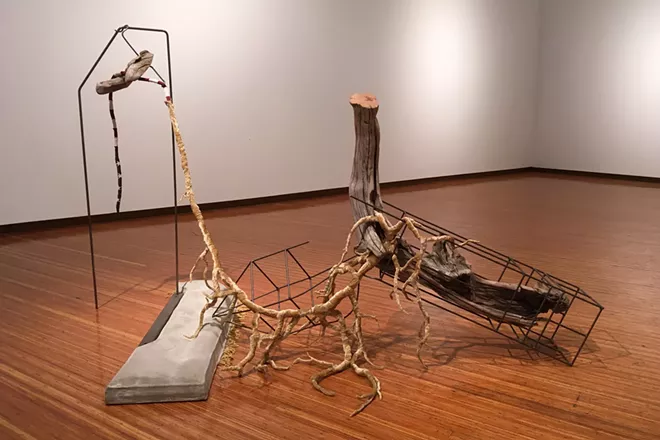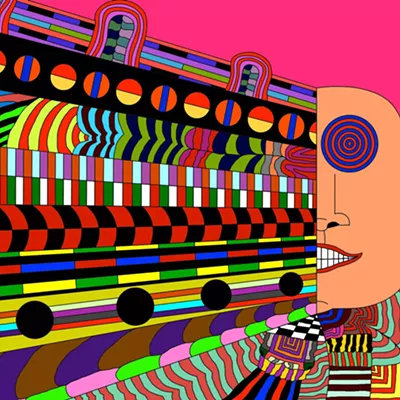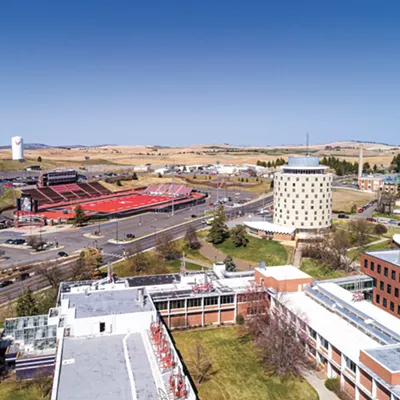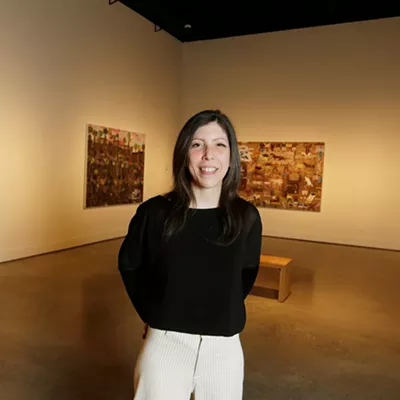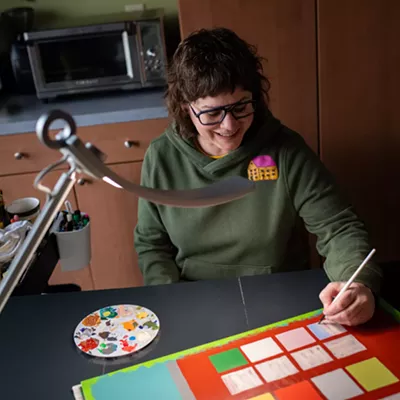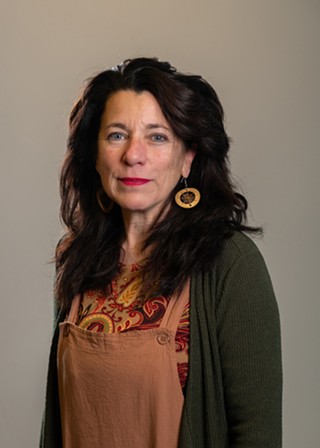The need to categorize might be fundamental to human thought and speech, but it can also be paradoxical, both helpful and a hindrance. Labels can provide context, directing us toward understanding complex things, like faith and politics. However, language that circumvents complex thought in favor of single words or phrases — pithy sayings and sound bites, for example — can be limiting and potentially divisive.
Rather than choosing "sides" on the issues that are important to her, artist Stacy Isenbarger combines found and formed objects to create artworks that put the onus on viewers to suss out possible meaning. Or meanings.
"I love words that have multiple meanings," says Isenbarger, whose new exhibit at Eastern Washington University, on display through Jan. 19, is titled "SPLIT" — a word that can be an adjective, noun or verb.
The associate professor of art at the University of Idaho College of Art & Architecture reads a lot of poetry, she says.
"And I think that how poets structure their words inspires the way I want to structure my artmaking," she says. "I hope that when people are looking at my work, they're kind of labeling what they think [each thing is], and then getting a little lost in their own interpretation of it."
A foundational work in the show is an assemblage of objects called "Head Off & Split," which Isenbarger originally conceived of as an exploration of spirituality. One metal cage-like structure encases a thick old tree branch, out of which "grows" a tree root-like form Isenbarger enveloped in luxurious brown velvet. The roots climb toward and hang from another metal cage form.
The natural elements would reflect a reverence for nature, versus the more formal structures offered by organized religion represented in the metal pieces, Isenbarger explains.
But something happened in 2021 that nudged the artist in a new direction, prompting her to wrap a portion of the tree root in a narrow sliver of the American flag: A mob stormed the U.S. Capitol in Washington, D.C., where Congress was gathered to formally transfer presidential power from Donald Trump to President Joe Biden.
"And then Jan. 6 happened and by Jan. 15, that piece was finished because I just couldn't do anything but change that piece to be about that experience," Isenbarger explains.
Other pieces from "SPLIT" address politics in a similarly ambiguous yet potent way. Isenbarger created a series of "protest signs" using hard plastic mesh designed for cross-stitching that she dipped into concrete to make them brittle, aged-looking and, of course, dysfunctional. Not only does Isenbarger juxtapose materials with a strong gender association — female textile work versus male construction work — she deliberately left the "signs" blank.
"The protest signs themselves don't have text on them, because I don't think it matters what side you're on," Isenbarger says. "I think we're all sort of standing in fixed positions, and we're all kind of burnt out."
In another series, "Lost Expectations," which pairs fabric dipped in concrete and framed in an embroidery hoop, words are essential. "Be true," one reads. "Be sweet," advises another.
These are the platitudes Isenbarger might have heard growing up, especially in the southeast, where religion rules, yet where her family's Catholic background was at odds with the dominant Protestant faith. They could just as easily be nostalgic odes to a bygone era. Or maybe they're both. Or something else entirely.
"What I appreciate about [Isenbarger's] work specifically is the tension and ambiguity that it creates for the viewer," says EWU gallery director Joshua Hobson, who also lectures in photography for the university's Department of Fine and Performing Arts.
"It strikes a nice balance between recognizable forms and materials with the unexpected and avant-garde." ♦
"SPLIT" • Through Jan. 19, 2023; open Mon-Fri from 9 am-5 pm • Free • Eastern Washington University • 140 Art Building, Cheney • ewu.edu/art • 509-359-2494

